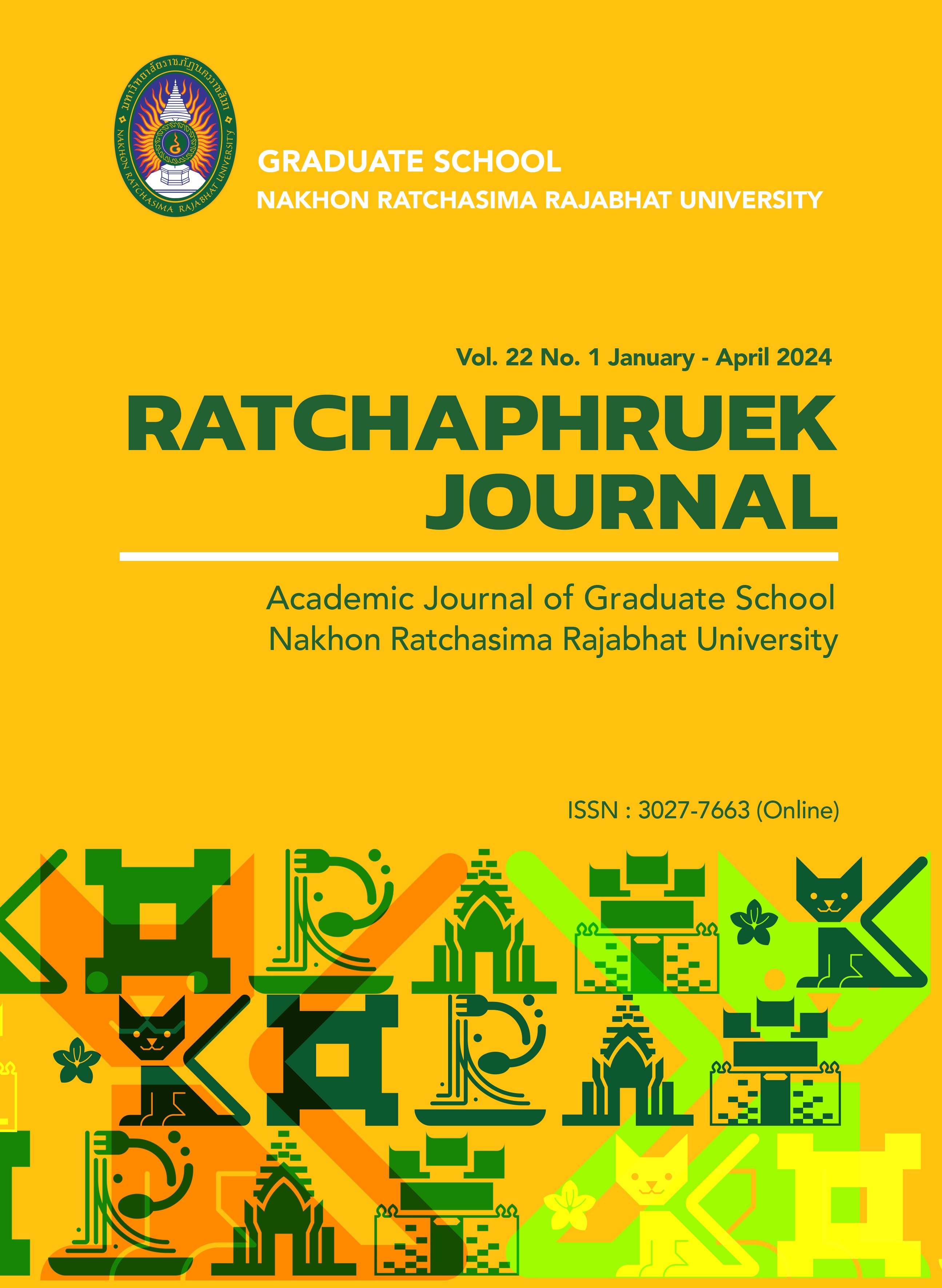Causal Factors in New Normal Instructional Management on Upper Secondary Students’ Achievement of Chiang Rai Province
Main Article Content
Abstract
This research aimed to study the relationship between causal factors in new normal instructional management and the achievement of upper secondary students in Chiang Rai Province. Additionally, the study sought to examine the consistency between the causal factors model and empirical data gathered from upper secondary teachers in Chiang Rai Province. Moreover, the research aimed to investigate the direct, indirect, and total effects of variables influencing the achievement of upper-secondary students in Chiang Rai Province. The sample group comprised 172 upper secondary teachers from Chiang Rai Province, and the research instrument used was a questionnaire with three parts. Path analysis was employed for data analysis.
The research findings are summarized as follows:
1. The relationship between causal factors in new normal instructional management and the achievement of upper secondary students in Chiang Rai Province exhibited correlation coefficients ranging from -0.90 to 0.655 among the five variables.
2. The causal factors model aligned well with empirical data, demonstrating an R2 value of 0.58.
3. The variable with the highest direct and total effect on the achievement of upper secondary students was the readiness of online technology. Additionally, the attitude towards using online technology in instruction had an indirect effect with statistical significance at the .01 level.
Article Details

This work is licensed under a Creative Commons Attribution-NonCommercial-NoDerivatives 4.0 International License.
References
จิรกานต์ อ่อนซาผิว และสุชาดา นันทะไชย. (2564). ปัญหาและความต้องการของการจัดการเรียนรู้ในช่วงสถานการณ์โควิด 19 โรงเรียนวัดด่านสำโรง สำนักงานเขตพื้นที่การศึกษาประถมศึกษา สมุทรปราการ เขต 1. Journal of Modern Learning Development, 6(4), น. 49-66.
จุรีลักษณ์ หมีดนุ้ย, อมิตา หมัดส่า และโกมลมณี เกตตะพันธ์. (2565). ปัจจัยการรับรู้ แรงจูงใจที่ส่งผลต่อผลสัมฤทธิ์ทางการเรียนออนไลน์ของผู้เรียนในจังหวัดสงขลา. ในรายงานสืบเนื่องการประชุมหาดใหญ่วิชาการระดับชาติและนานาชาติครั้งที่ 13 (น. 1780-1793). มหาวิทยาลัยหาดใหญ่.
ณัฐวุฒิ สุขเสนา. (2565). ปัจจัยที่มีผลต่อประสิทธิภาพการเรียนออนไลน์ของนักศึกษาปริญญาโทคณะบริหารธุรกิจ (MBA) มหาวิทยาลัยรามคำแหง. (วิทยานิพนธ์มหาบัณฑิต, มหาวิทยาลัยรามคำแหง). สืบค้นเมื่อ 20 พฤศจิกายน 2566, จาก https://mmm.ru.ac.th/MMM/IS/mmm25/6314131052.pdf
ธัศฐ์ชาพัฒน์ ยุกตานนท์. (2565). การศึกษาเรื่องปัจจัยที่มีผลต่อผลสัมฤทธิ์ของการเรียนการสอนแบบออนไลน์ภายใต้สถานการณการแพร่เชื้อไวรัส COVID-19. วารสารสันติศึกษาปริทรรศน์ มจร, 10(2), น. 509-522.
ธานินทร์ ศิลป์จารุ. (2555). การวิจัยและวิเคราะห์ข้อมูลทางสถิติด้วย SPSS (พิมพ์ครั้งที่ 11). กรุงเทพฯ: บิสซิเนสอาร์แอนด์ดี.
ธีระวัฒน์ สุขีสาร. (2554). การศึกษาความเที่ยงตรงของการประมาณค่าในการวิเคราะห์โมเดลสมการโครงสร้างพหุระดับภายใต้เงื่อนไขวิธีการประมาณค่า และขนาดตัวอย่างที่แตกต่างกัน (วิทยานิพนธ์ดุษฎีบัณฑิต, มหาวิทยาลัยศรีนครินทรวิโรฒ).
ศมณณ์ญา บุญประสพ. (2564). สภาพและปัญหาด้านการจัดการเรียนการสอนและมาตรการป้องกันโรคในสถานการณ์การแพร่ระบาดของเชื้อไวรัสโคโรนา 2019 (COVID-19) ของสถานศึกษาในเขตพื้นที่การศึกษามัธยมศึกษาชลบุรี ระยอง (รายงานการวิจัย). สืบค้นเมื่อ 5 พฤษภาคม 2566, จาก http://www.thaiedresearch.org/home/paperview/55966/.OfficeoftheEducationCouncil.
ศศิวิมล แช่มพราย. (2564). ปัจจัยที่มีผลกระทบต่อความพึงพอใจ และผลสัมฤทธิ์ในการเรียนการสอนออนไลน์ของนักศึกษามหาวิทยาลัยหอการค้าไทย (รายงานการศึกษาค้นคว้าอิสระมหาบัณฑิต, มหาวิทยาลัยหอการค้าไทย). สืบค้นเมื่อ 20 พฤศจิกายน 2566, จาก https://scholar.utcc.ac.th/server/api/core/bitstreams/b6d923da-0b68-4a98-9f6c-ccd809157d7e/content.
สุภมาส อังศุโชติ, สมถวิล วิจิตรวรรณา และรัชนีกูล ภิญโญภานุวัฒน์. (2552). สถิติวิเคราะห์สำหรับการวิจัยทางสังคมศาสตร์และพฤติกรรมศาสตร์: เทคนิคการใช้โปรแกรม LISREL. กรุงเทพฯ: เจริญดีมั่นคงการพิมพ์.


